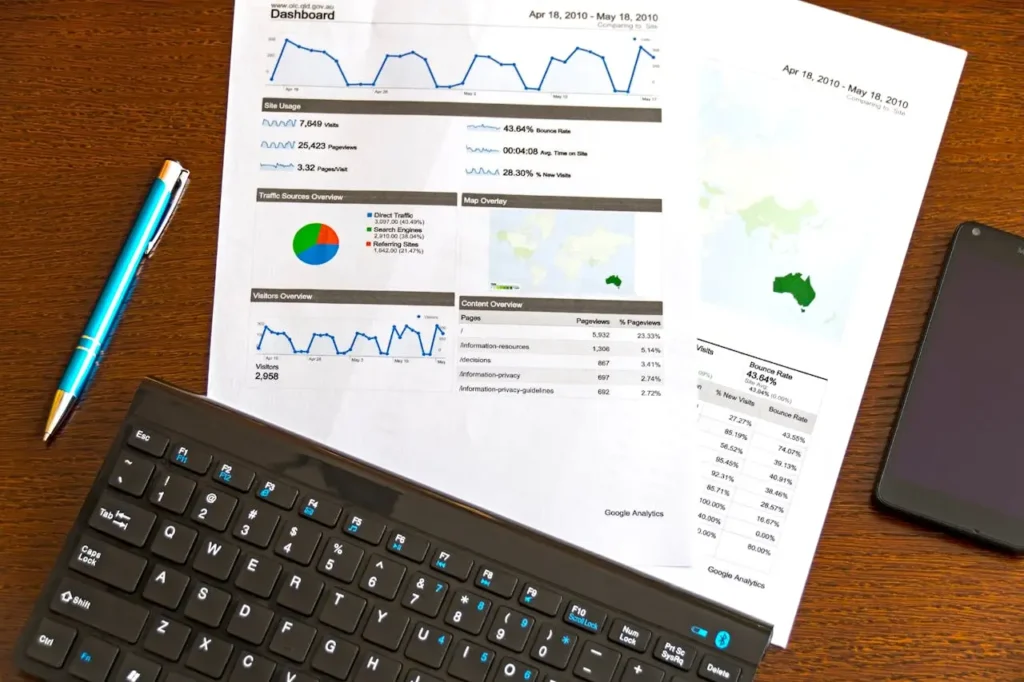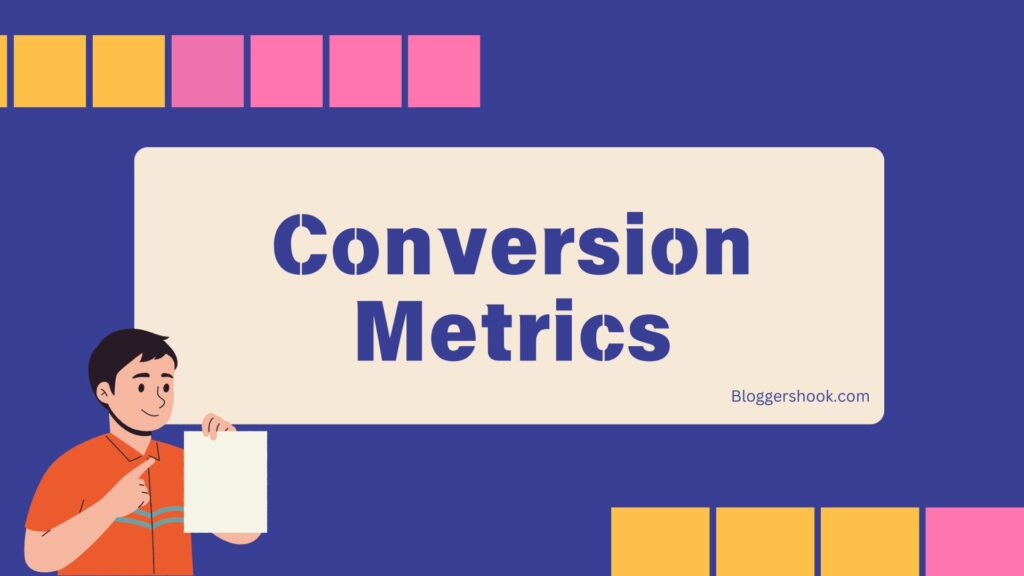In today’s digital age, running a successful blog involves more than just creating great content. Analyzing your blog metrics plays a crucial role in understanding your audience, refining your strategy, and growing your online presence.
Whether you are a beginner or an experienced blogger, making sense of these metrics can help you make data-driven decisions that lead to greater engagement and success. In this article, we’ll break down essential blog metrics, what they mean, and how you can use them to optimize your blog.

1. Traffic Metrics: The Foundation of Blog Analysis
Page Views
Page views represent the total number of times your blog pages have been viewed. It’s a basic but important metric as it gives you a clear indication of how much traffic your blog is receiving. However, while page views are helpful, they don’t provide a complete picture on their own. High page views don’t necessarily mean users are engaging with your content.
How to Use It: Monitor page views to assess your blog’s overall reach. Pair this metric with other data, such as engagement and user behavior, to gain deeper insights. If page views are increasing but engagement metrics like comments or shares are stagnant, it may indicate a need to improve the quality or relevance of your content.
Unique Visitors
Unique visitors represent the number of individual users who visit your blog within a specific time frame. Each visitor is only counted once, regardless of how many times they visit your blog. This metric is a more accurate reflection of the size of your audience.
How to Use It: Unique visitors help you understand the size of your audience. Regularly track this metric to gauge growth trends over time. A growing number of unique visitors indicates increasing interest in your content, while a decline might suggest that your blog needs more promotion or more compelling content to attract new readers.
Traffic Sources
Traffic sources show you where your visitors are coming from, such as search engines, social media, email campaigns, or direct traffic. This metric helps you understand how well your different marketing channels are performing.
How to Use It: Understanding traffic sources can inform your marketing efforts. For instance, if a significant portion of your traffic is coming from social media, you may want to invest more in social media campaigns. Conversely, if organic search traffic is low, improving your blog’s SEO might be a priority.
2. Engagement Metrics: Measuring User Interaction
Bounce Rate
Bounce rate refers to the percentage of visitors who leave your blog after viewing just one page without interacting further. A high bounce rate might suggest that users aren’t finding your content engaging or that the user experience (UX) needs improvement.
How to Use It: A high bounce rate can point to several issues, such as irrelevant content, slow loading times, or poor site design. To reduce bounce rates, improve your content’s relevance to your audience, enhance site navigation, and ensure pages load quickly. Monitoring this metric alongside session duration and pages per session can provide a clearer picture of user behavior.
Average Session Duration
Average session duration measures the time visitors spend on your blog during a single visit. Longer sessions typically indicate that users are finding your content valuable and engaging.
How to Use It: If session durations are low, consider revisiting your content strategy. Long-form content, engaging visuals, and compelling headlines can help keep users on your blog longer. You can also use internal linking strategies to encourage visitors to explore multiple posts.
Pages Per Session
Pages per session show how many pages a user views on average during a single visit. This metric is useful for understanding how well your content encourages further exploration of your blog.
How to Use It: Increasing pages per session indicates that users are engaging with multiple pieces of content. To boost this metric, implement effective internal linking strategies, use calls-to-action (CTAs) to guide users to related content, and create topic clusters to encourage deeper exploration.
Comments and Social Shares
Comments and social shares are direct forms of user engagement, demonstrating how much your readers value your content. Comments indicate active engagement, while social shares show your blog’s content is valuable enough to share with others.
How to Use It: Encourage reader interaction by ending posts with questions or prompts. Responding to comments can foster a sense of community and encourage further engagement. Use social share buttons to make it easy for users to share content, and track which types of content perform best on different platforms.

3. Conversion Metrics: Understanding Goal Completion
Conversion Rate
The conversion rate measures the percentage of visitors who complete a specific action or goal on your blog. This could be signing up for a newsletter, downloading a resource, or making a purchase.
How to Use It: Conversion rate optimization (CRO) is key to improving this metric. Test different CTAs, landing pages, and forms to determine what resonates most with your audience. Analyze which types of content or traffic sources lead to the highest conversion rates to refine your marketing strategy.
Lead Generation
Lead generation metrics track how effective your blog is at capturing potential customers’ information, such as email addresses or contact details. These metrics are crucial for blogs with the goal of building an email list or generating sales leads.
How to Use It: Use lead magnets like free ebooks, checklists, or webinars to entice visitors to provide their information. Monitor the effectiveness of these tactics by tracking sign-up rates and improving forms or CTAs based on user behavior.

4. SEO Metrics: Measuring Organic Success
Organic Search Traffic
Organic search traffic refers to visitors who come to your blog through unpaid search engine results. This metric shows how well your blog is optimized for search engines and how relevant your content is to search queries.
How to Use It: Track organic search traffic to assess the effectiveness of your SEO strategy. If you notice a decline in organic traffic, it might be time to re-evaluate your keyword strategy or update older posts for relevancy. Tools like Google Search Console can provide insights into which keywords drive traffic to your blog.
Keyword Rankings
Keyword rankings show how well your blog is ranking for specific keywords in search engine results. Higher rankings typically lead to more organic traffic, while lower rankings may indicate the need for SEO improvements.
How to Use It: Use tools like SEMrush or Ahrefs to track keyword rankings. If certain keywords aren’t performing well, consider revisiting the associated content to improve keyword usage, meta tags, and content quality.
Backlinks
Backlinks are links from other websites that point to your blog. These are an important SEO metric because search engines view backlinks as a sign of credibility and authority.
How to Use It: Monitor your backlink profile to ensure your blog is gaining high-quality links. Building relationships with other bloggers or guest posting on reputable sites can help you generate backlinks. Avoid low-quality or spammy links, as these can negatively impact your blog’s SEO.
5. Retention Metrics: Building a Loyal Audience
Returning Visitors
Returning visitors represent users who come back to your blog after an initial visit. This metric indicates how well you are retaining your audience.
How to Use It: A high percentage of returning visitors signals that your content is engaging and valuable. Encourage return visits by maintaining a consistent publishing schedule, offering exclusive content to subscribers, and promoting new posts through email newsletters or social media.
Subscriber Growth
Subscriber growth measures how many people are signing up to receive regular updates from your blog, such as through an email newsletter. A growing subscriber list indicates that users find value in your content and want to stay informed.
How to Use It: Track subscriber growth to gauge the success of your email capture strategies. To grow your list, offer incentives like exclusive content or early access to new posts. Use email marketing tools to segment your list and personalize content for improved engagement.
Conclusion
Analyzing blog metrics is essential for understanding how well your content is performing, where your traffic is coming from, and how engaged your audience is. By regularly reviewing and acting on these metrics, you can optimize your blog’s strategy, increase traffic, improve engagement, and ultimately achieve your blogging goals. Whether you’re focusing on traffic, engagement, conversions, or SEO, each metric offers valuable insights that can shape the future success of your blog.


